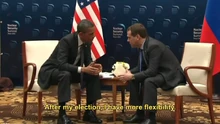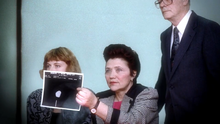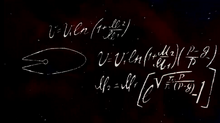1:11

U.S. President Barack Obama and Russian President Dmitry Medvedev have an off-the-record conversation
Government talk about space or space exploration has the implication of alien presence. It is possible that Russia and America have a secret understanding about their shared roles in outer space. On December 7, 2012 after an interview, Medvedev made remarks offstage that the President is given a folder that is entirely devoted to the visitors to our planet; the aliens and the human groups that are monitoring them. After World War II, there was a number of UFO encounters that gave cause to joint cooperation between the U.S. and Russia. The secret relationship is said to have begun because of the Soviet Union’s first documented UFO encounter, referred to as the Russian Roswell.

Kapustan Yar: A Russian fighter shoots down a cigar-shaped UFO
The Kapustin Yar UFO incident occurred within a year of the Roswell UFO incident. The Roswell incident happened near the only military unit in the world that had nuclear weapons, the Roswell 509th Bombing Unit. Extraterrestrials may have had an interest in the nuclear technologies that were being developed on Earth. Both the Kapustin Yar and Roswell incidents could have been contact attempts by extraterrestrials because of the development of nuclear weapons. Such contact could have initiated an era of secret cooperation between the world’s two great superpowers. At Roswell, the recovered aliens were dead, and unable to assist with reverse engineering. At Kapustin Yar, they got the spacecraft and at least one survivor. That may have given the Soviets the advantage in the Space Race. Ancient astronaut theorists say the United States was able to quickly catch up because of what the U.S. and Russia were doing together in secret.
Act 2 
11:12July 17, 1975. The U.S. – Soviet space docking, known as the Apollo-Soyuz Test Project, ends the Space Race and starts a new era of cooperation. Many believe that cooperation began decades earlier, after the Roswell and Kapustin Yar UFO incidents. Apollo-Soyuz is believed to be a “soft disclosure” of U.S. – Soviet cooperation.
Moscow, July 1965. A decade before Apollo-Soyuz, scientists studied 25 photos of the far side of the moon from unmanned Russian probe, Zond 3. Anomalies are seen, including a giant glass dome, and a 20-mile high tower. The 25 photos are classified in Russia, and sent to NASA, implying cooperation between Russia and United States. Russia may have discovered structures on the moon, and helped guide the first American moon landing four years later. Ancient Astronaut theorists believe the Russians journeyed even deeper into space to find evidence of extraterrestrials.

Marina Popovich saying that Phobos 2 was shot down
In 1998 NASA’s Mars Global Surveyor satellite photographed a 279 foot long monolith on Phobos. Ancient Astronaut theorists connect the photo to the Russian findings and theorize that extraterrestrials are guarding Phobos. Both Russia and the U.S. had become aware of working extraterrestrial technology. Extraterrestrials could be guiding the U.S. and Soviet space programs to encourage cooperation, and defuse the nuclear arms race. Another incident involved secret communications between a Russian scientist and his supposed alien ancestors.
Act 3 
19:07
Konstantin Tsiolkovsky writes the “ideal rocket formula”
Konstantin Tsiolkovsky subscribed to a Russian philosophy known as cosmism, which promoted the idea that humanity has an ancient connection to extraterrestrial beings. Russian cosmism, which began in the 19th century, holds that our origins are alien, that human civilization is an alien transplant, and that our home is in space. Tsiolkovsky’s writings described extraterrestrial beings sending messages to mankind from the stars, and that he had personally received interplanetary communications. In 1889, he had a sighting of a cloud in the shape of a perfect cross. Tsiolkovsky believed in a universe teeming with life that was guiding humanity’s evolution, and that he was receiving telepathic messages from extraterrestrials. Some of his models of an ideal spacecraft resembled descriptions of cigar-shaped UFOs. These beliefs and writings suggest that Tsiolkovsky was being guided by extraterrestrials, and that they supplied the rocket equation.

Russian Cosmism: Mankind’s destiny is to join extraterrestrial beings in the cosmos
Act 4 
27:09
Mikhail Gorbachev announces his resignation
Russia was now largely controlled by deep-pocketed autocratic politicians like Vladimir Putin who were free of public scrutiny that would force disclosure. The high level of secrecy in Russia would allow them to handle and secure the more sensitive information.
In contrast, in the years before the collapse of the Soviet Union, Russia’s history of extraterrestrial encounters was fully exposed. The so-called Blue File, 124 pages of UFO cases that went to the KGB was declassified. The top secret Soviet UFO program known as the SETKA program existed for 13 years, from 1978 to 1991. Researchers are amazed by the few available documented cases from SETKA that have been studied.
Theorists believe the United States and the Soviet Union have been secretly sharing their information about decades of extraterrestrial contact. More answers can be found in Russian research that is intended to change the human body to be able to travel the galaxy.
Act 5  Edit
Edit
32:22Voronezh, Russia, September 27, 1989. Children playing in a park witness a disc-shaped craft land. 30 other eyewitnesses corroborate their account. Two beings came out of the craft, a very tall nine to 12 feet mechanical-looking one and a modest-sized one that looked like a robot. Both were distinguished by very small heads. The taller being pointed an apparatus at a boy who was in shock and froze him. He was then reactivated before the craft took off. The number and sincerity of witnesses corroborate the account of the beings as artificial-looking and mechanical.
Extraterrestrial beings could have adopted synthetic bodies better suited for space travel. Humanity might be forced to do the same in order to travel into deep space. There is a growing movement in Russia to take the first steps of this transformation.

Some of the 2045 Initiative goals
This ties in with Russian cosmism. Tsiolkovsky said that he was in contact with extraterrestrial light beings. We could be catching up with his vision, and by creating avatar humans, we are recreating the extraterrestrials who originally connected with him. The prospect of digitizing a human being for space travel is much more accepted in Russia than in the United States. Experimenting on a human to transplant a brain into a robot is would take significant time to gain acceptance in the U.S.. The Russian government might do such experiments more readily than the United States. Russian cosmism and transhumanism means they’re trying to do things that Russians already believe in. A U.S.-Russian partnership would have benefits for space travel. Humanity, led by the United States and Russia, could be poised to explore deep space, and also create a military space force.
Act 6 
38:05
President Donald Trump calls on the Pentagon to create a Space Force
The creation of the space force may show that there’s been an escalation, since a force of any kind is created to deal with a threat. Our civilization is beginning to send probes and maybe soon people throughout the solar system, even into deep space. It’s possible the space force could be set up to deal with a threat within the solar system.
Ancient astronaut theorists believe the U.S.–Russia relationship in space is the result of an agenda by an extraterrestrial intelligence that believes that the two nations have complementary strengths, and that space exploration is mankind’s need to fulfill its destiny. The Space Race has bound Russia and America together as nations racing alongside each other. The Space Race was actually secret cooperation, which is later coming to fruition for the defense of Earth. Ancient astronaut theorists believe the human journey into space will be aided by alien visitors who see our planet as eager, cooperative explorers.
No comments :
Post a Comment